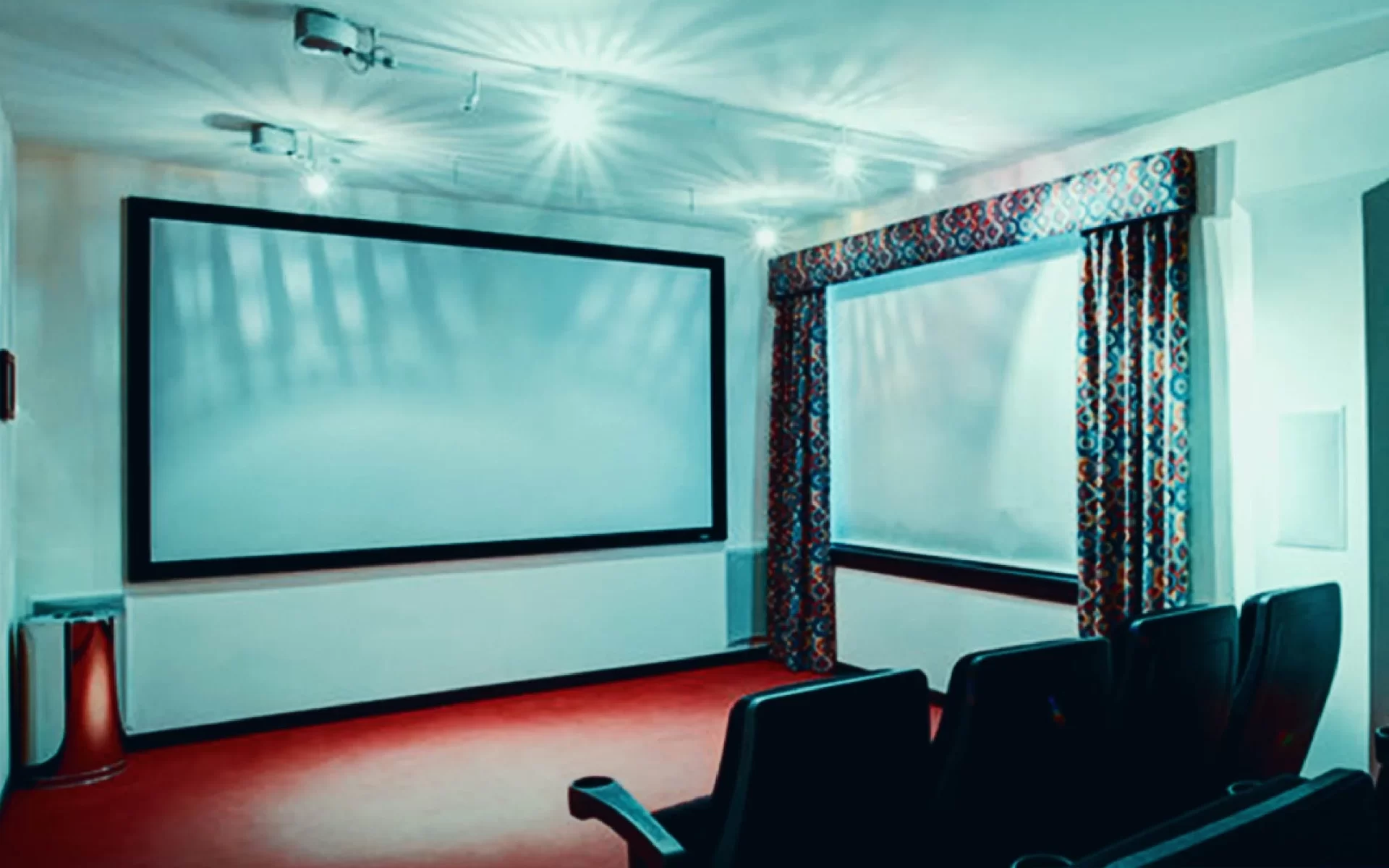
What is ALR & how ALR functions?
To start with the full form ALR means ‘Ambient Light Rejecting’ It is a unique technology found in a variety of projection screens. This technology has been around for a while now.
The term ‘ALR’ is widely used in the AV industry, but consumers from the personal and commercial sector who are investing in this technology need to understand about ALR and its benefits, features, functionality and the right kind of usage.
As some confusion is created by some manufacturers making inappropriate claims or supporting non-ALR surfaces as an ideal solution. To clear out the confusion in the AV marketplace related to ALR and its functionalities.
We present this blog for you to read and understand What is ALR and how ALR functions? Read till the end.
First, let’s understand
What is ALR?
The ambient light present in the home cinema room is like light from windows, reflective walls, wall sconces and lights all around, the rejection of these lights is done by an ALR projector screen which offers a better colour contrast enhancement, deep blacks and white levels resulting in a life-like visual experience.
The ALR Screen selectively throws back the light to the viewer. This outcome is produced by placing the projector and screen in such a way that the projector’s light is reflected towards the viewer while the other ambient light in the home cinema room is bounced back in the other directions out of viewers’ sight. ALR screens are only effective if the ambient light is not hitting the screen from the same spot as the projector.
Each screen reflects light in two forms: by Diffuse reflection and Specular reflection.
Diffuse reflection
When light strikes a surface and is reflected at various angles, this is a Diffuse reflection. Most light is thrown back by scattering centres just below the surface. As all light is operated equally and reflected at all angles, diffusive surfaces do not make ideal ALR screens.
The viewing surface colour is also crucial in diffuse reflection. The colour of the material influences the reflected colour of the light or how much white light reflects.
For instance, a pure white screen will reflect more light possible of all colours and will not soak any light. A grey screen will soak in some amount of light reflected. The darker the grey, the more absorption of reflected light by the material.
White screen surfaces are not ideal diffusers. Some light is not adequately diffused, depending on how smooth or rough the surface is or what elements are used in a film formulation if it is a formulated surface. A surface that is too smooth can have a high level of gloss and create hot spotting. A surface that is too rough can intervene with the picture resolution.
Specular reflection
When the light hits a surface and is bounced away at a single, opposite angle, it is Specular reflection. ALR screen surfaces utilize specular reflection to hold non-projector light from reflecting watchers. Mostly it is done using a mixture of things.
Usage of specular reflective components in the formulation of the screen. They reflect off-axis ambient light away from watchers. The quantity of specular reflection is an essential indicator of the amount of ALR performance on a surface. ALR surfaces also use dark grey colour to consume stray ambient light and enhance the contrast.
How ALR functions
Fabrics of ALR are designed to provide directional acceptance and re-reflectance of light within specified boundaries. The purpose of an ALR screen is to react properly to light from perpendicular or orthogonal sources like the projector light and curb the re-reflection of light arriving from off-axis areas such as windows & lighting.
Why grey tint doesn’t make it ALR
A good amount of grey screens come with a grey tint, but most are still diffuse reflective surfaces. The grey tint benefits in enhancing contrast in controlled ambient light conditions. But that does not qualify it as an ALR screen surface.
To learn more about our cutting-edge Ambient Light Rejecting Projector Screen, click here: Leor 17 Visit our website to explore our other premium quality projection screens: https://luminascreens.com/our-products/
It’s not just a number game, it’s more than that.
There are two methods through which ambient light rejection is mostly communicated: by describing how much ambient light gets in or how much is rejected.
Still, picking the right ALR screen is more than just a number. Producing a good level of ALR needs a balancing act. Surface colour, smoothness, gloss, and gain also affect the viewing experience. As material things are customised to reject more ambient light, other performance specs, such as viewing angle and image resolution, will be affected.
Conclusion
ALR screens are usually the best option for the home cinema room.
To pick the best ALR screen for your application, consider all manufacturer specs and recommendations, not just the amount of diffuse reflection (or lack thereof). Also, look at each surface’s full gain curve and see how fast it loses gain at wider viewing angles.
To get the best out of an ALR screen, the ambient light source must be coming from a different angle than your projector such as reflections of white walls, overhead or recessed lighting or from windows on the side of your room.
- Date - November 20, 2020